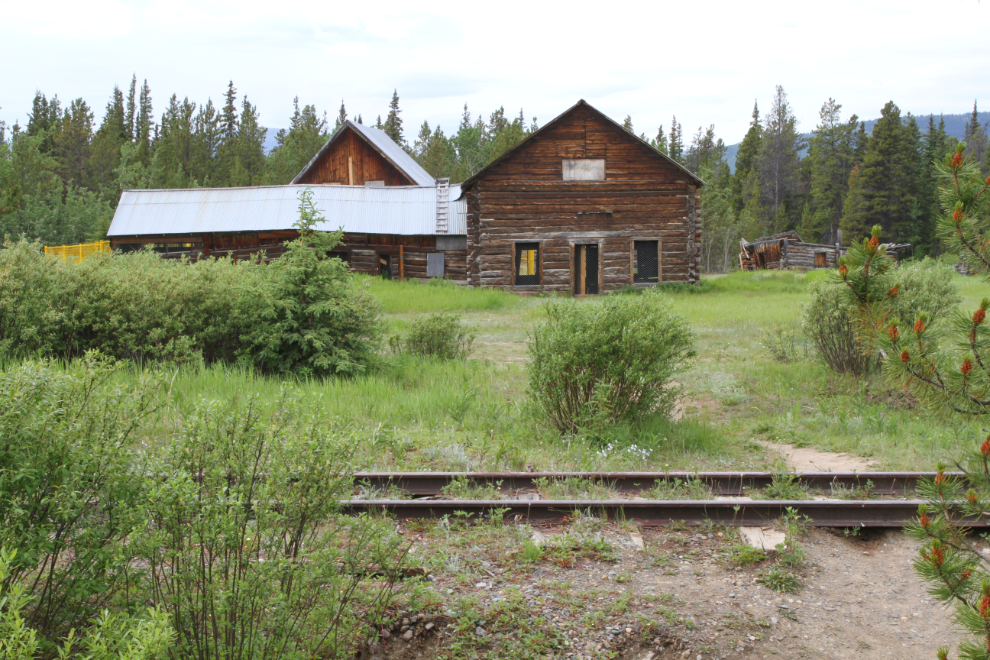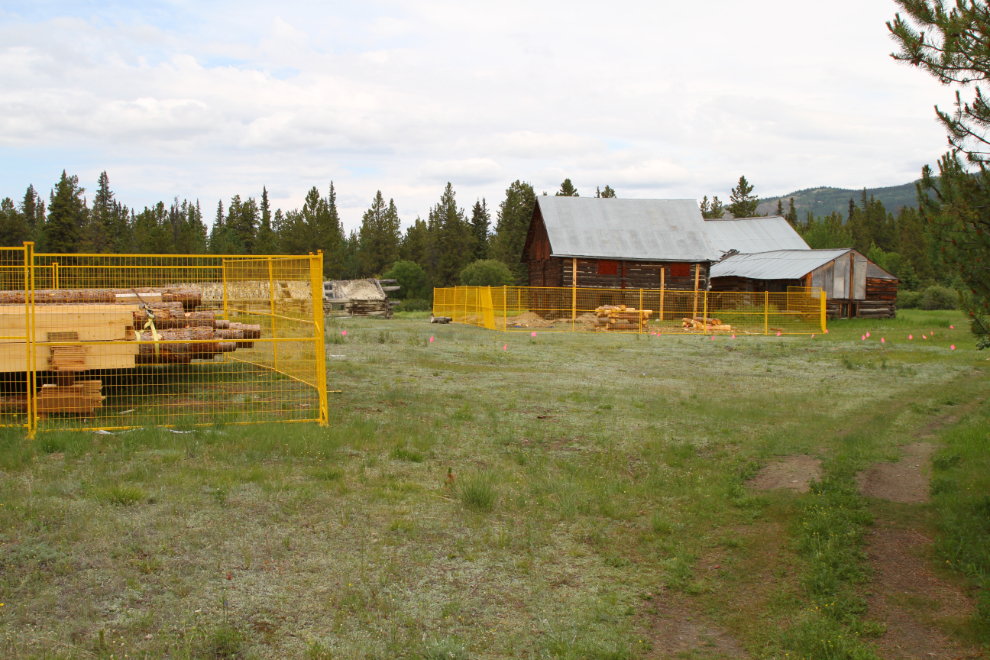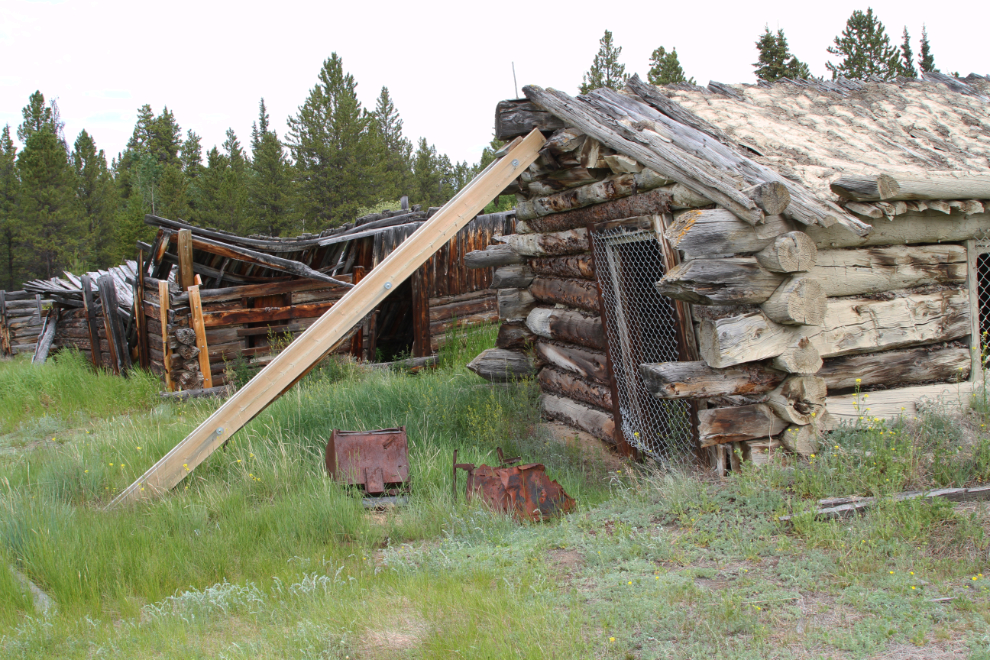Planes and pilots and the importance of little airports
My regular readers know that I love airplanes. Yesterday, I drove to Carcross to attend a fly-in event sponsored by the Yukon chapter of the Canadian Owners and Pilots Association (COPA, Branch 106). Part of the reason I went was to support the Carcross Airport, which regularly gets threatened with closure as a result of the actions of a handful of locals. This post looks at airplanes, but also at the importance of little airports like the one at Carcross.
The weather forecast wasn’t great for an event like that, but I hoped the ceiling would stay high and dry. The first photo, looking south on the South Klondike Highway, shows Montana Mountain ahead. Carcross sits at the base of that mountain.
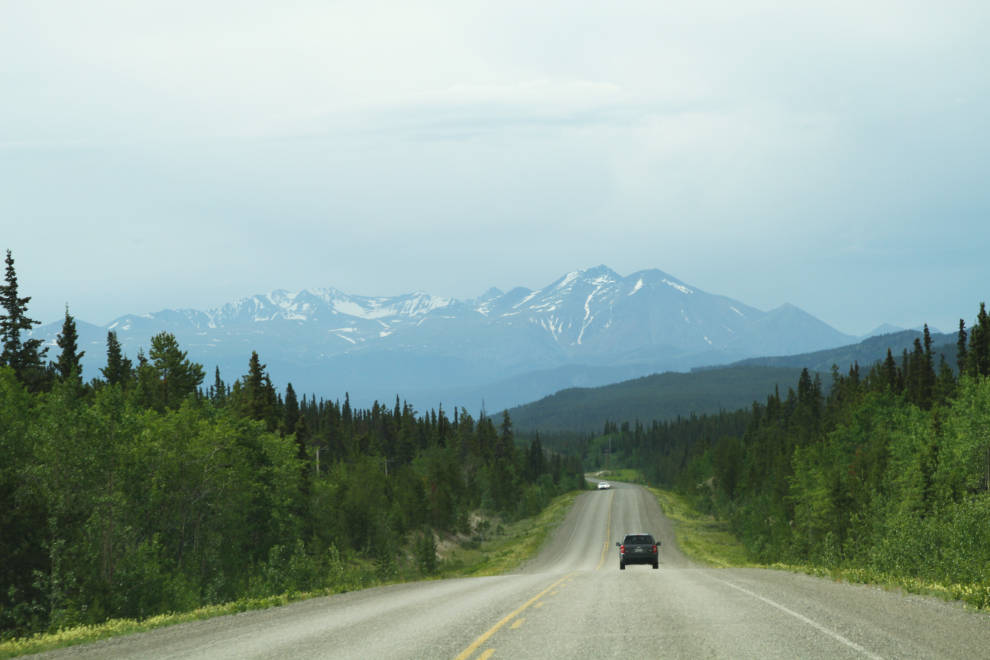
My first look at the fly-in. The construction fence was put up a couple of years ago as a temporary measure to keep people and vehicles off the runway. The Carcross airport (Carcross aerodrome officially) is unmanned and uncontrolled, with maintenance done by the Yukon Department of Highways and Public Works. The single gravel runway is 2,200 feet long x 75 feet wide.
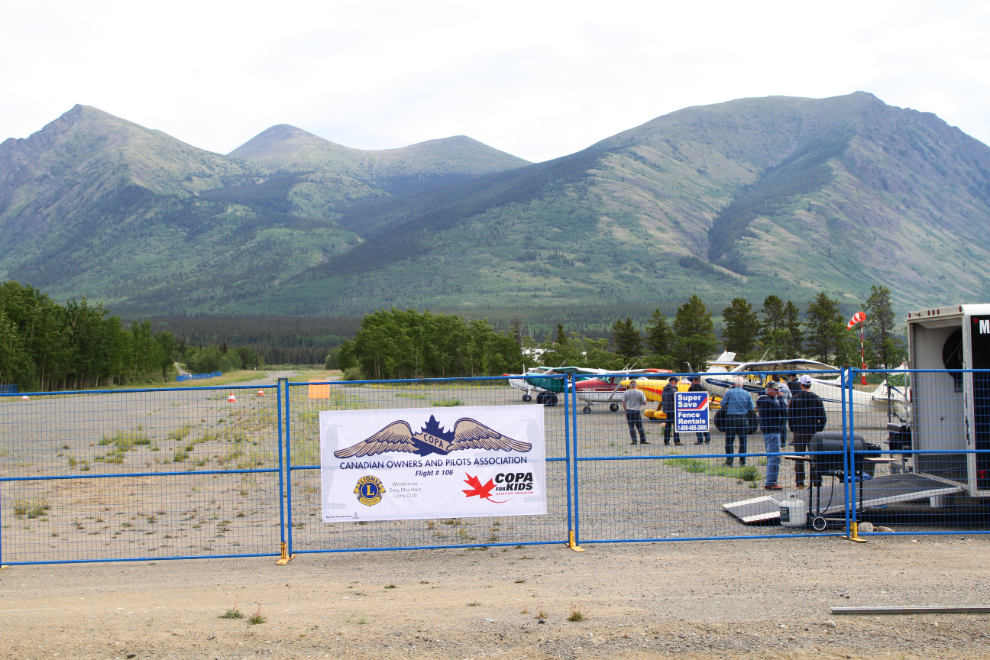
The first thing that caught my attention was this RV towing a helicopter. I met the owner and talked to him for a few minutes. He and his wife are from California and had spent a couple of days in Carcross, exploring the area with the helicopter, a 1999 Robinson R-22. Too rich for my blood, but a wonderful way to explore!
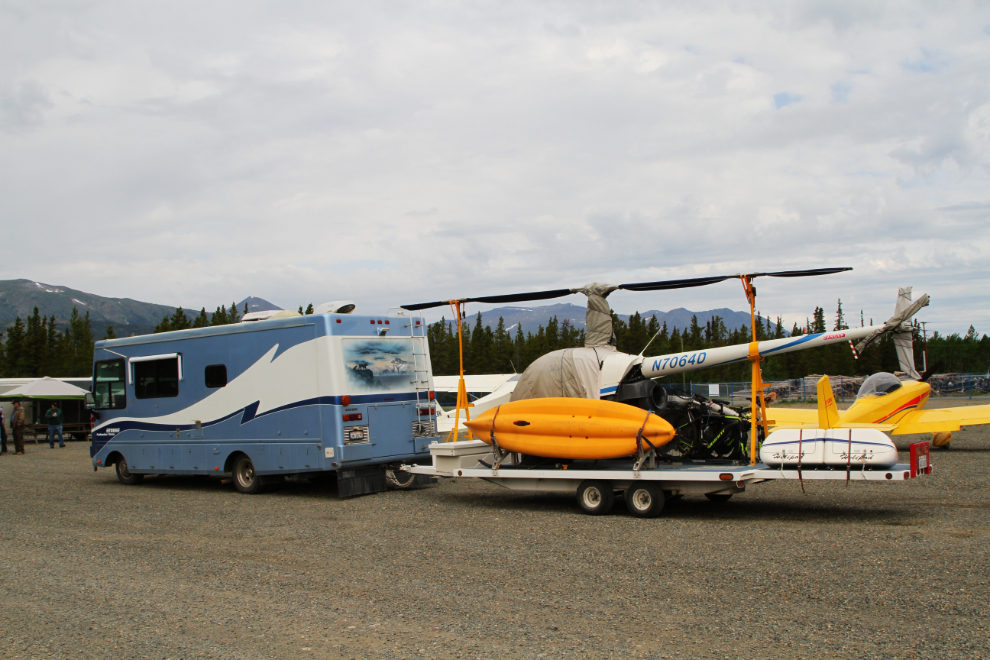
Meeting more people was next – Carcross friends and aviation friends, and friendly pilots and spouses. Aviation is a sport that welcomes everybody, and the barbecue enhanced that – I had a good burger with a drink for $5. Within a few minutes, I had also made my support of the aerodrome official by becoming a member of the Carcross Aerodrome Society.
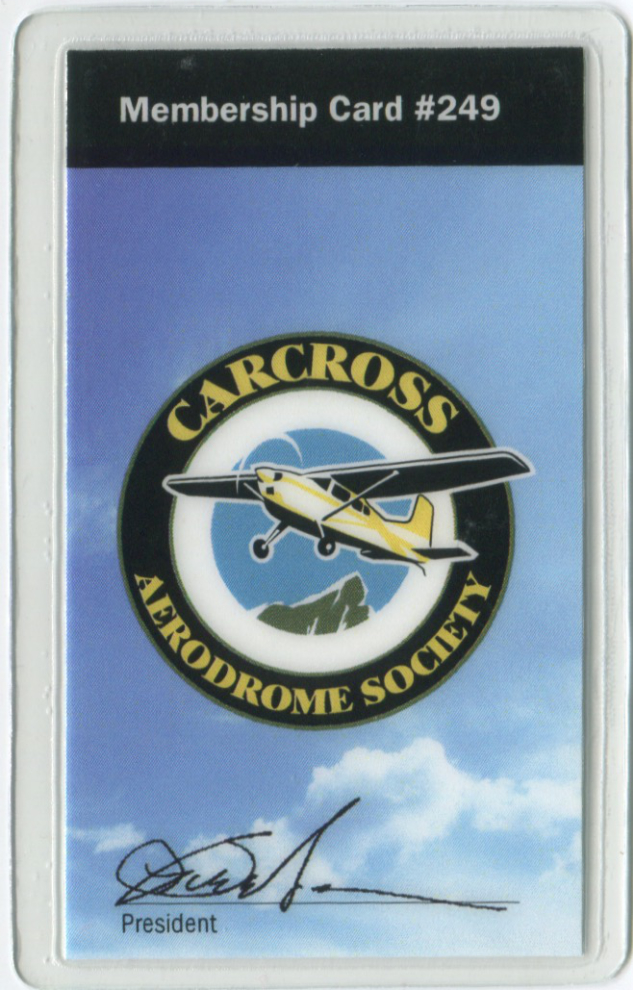
Small local airports are important, but many are under the sort of pressure the Carcross one is, at least partly because small planes aren’t part of most people’s lives and they don’t understand them. To start with, a common perception is that small planes are rich men’s toys, and they just aren’t. I almost bought another Cessna 172 four years ago, but for a long list of reasons went for a motorhome instead. The motorhome, which still cost less than a nice new pickup, cost almost twice what the Cessna would have.
Having an airport right in town is good for business, particularly tourism. My first stop in the Yukon when I came up in 1985 was at Carcross, and it was the airport’s location that made it a good stop. That was one of the most significant vists in my life, as I fell in love with the place. Without the airport at Carcross, would my reaction to the Yukon have been as strong? I don’t know. If I still had an airplane, though, would the airport have kept me in Carcross when I moved there? Probably.
One of the biggest reasons I decided not to buy the Cessna four years ago is that there are few places to go unless you have floats or an aircraft capable of being equipped with big tires for off-airport use. Other than Carcross, only the Braeburn Lodge and Ross River have airports close to any services. When I had my Cessna in BC, there were dozens of airports to fly to with services – we used to fly to a motel/restaurant in the Okanagan that had its own airport!
Noise is a common complaint about in-town airports, but thousands of people live within earshot of the Whitehorse airport which has jets coming and going several times a day, and nobody complains. The sound level of normal small aircraft is nowhere near as high.
Enough about airports, let’s talk about airplanes 🙂 One of my goals for the day was to get photos of all of the aircraft that attended, for my Yukon Aircraft Photographs page – it’s been neglected for quite a while now. Photos of most of the aircraft that attended this event follow.
First on the line was this 1976 Bellanca 8GCBC Scout, C-GMGJ.
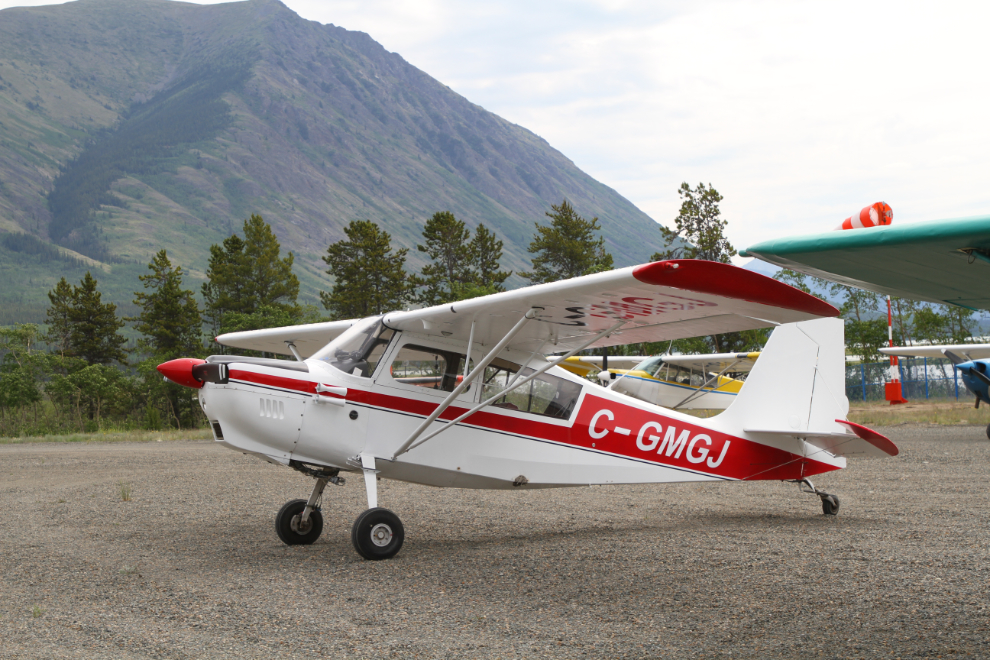
More aircraft were arriving fairly steadily. The next photo shows 1943 Beech D17S Staggerwing CF-BKQ arriving. I’ve wanted to get a close look at this classic for a very long time.
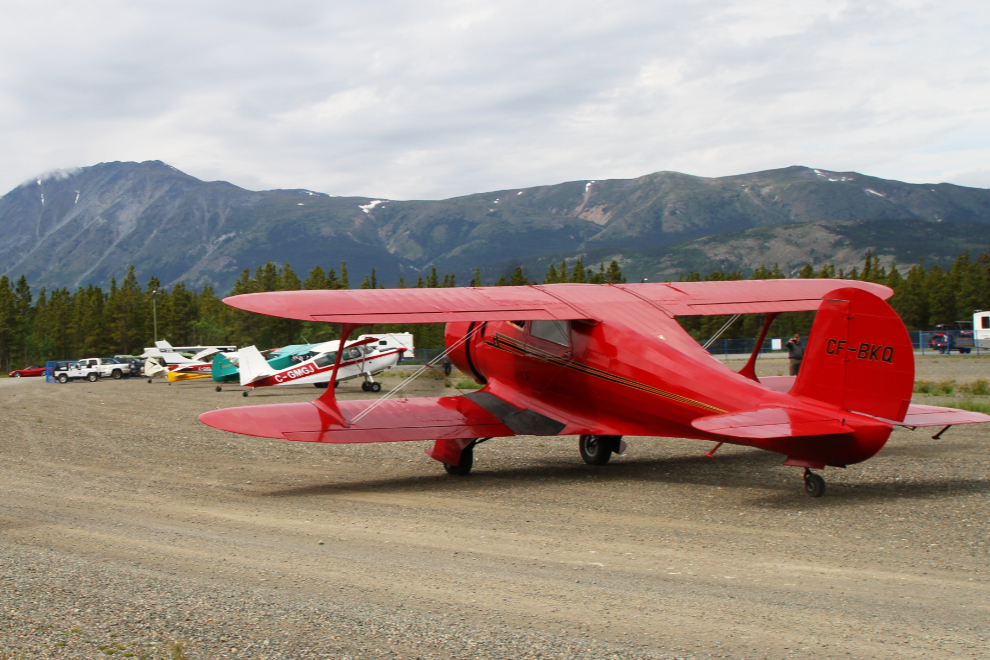
This is a 2005 Savannah, C-IZZX, a 2-seat “Advanced Ultra-light” built in Italy.
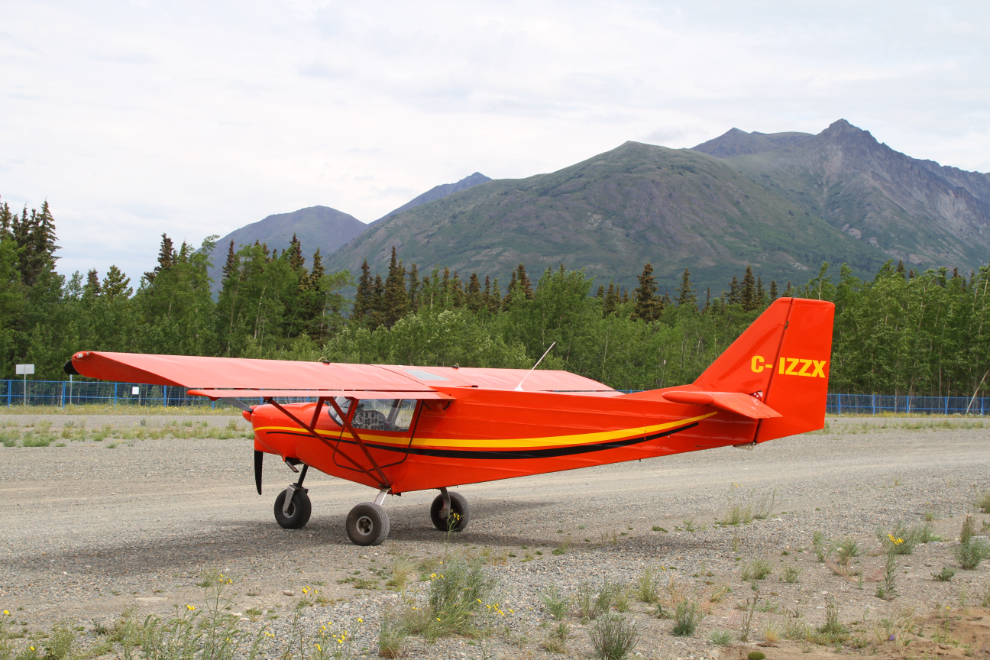
In from Atlin, Tundra Helicopters’ 1980 Bell 206L-1, C-GVIW, made a showy entrance with a low, high-speed pass down the runway before landing 🙂
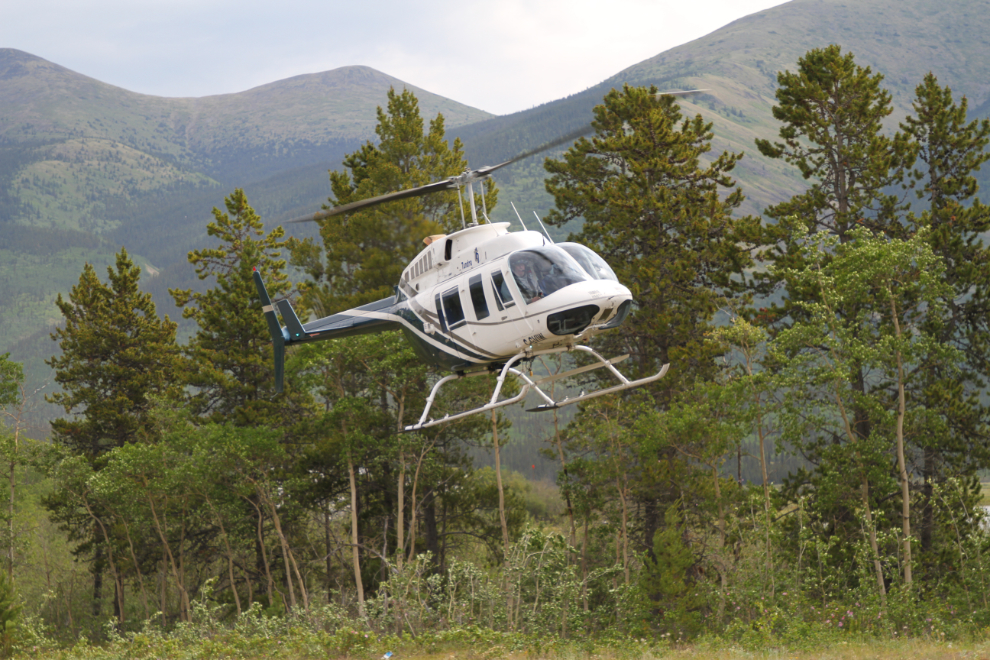
Next is a 1954 Piper PA-18-135 Super Cub, C-GMHA. Super Cubs seem to be getting more popular in the Yukon in recent years – with “tundra tires” like this, they can land and take off in some pretty incredible places (runways aren’t needed).
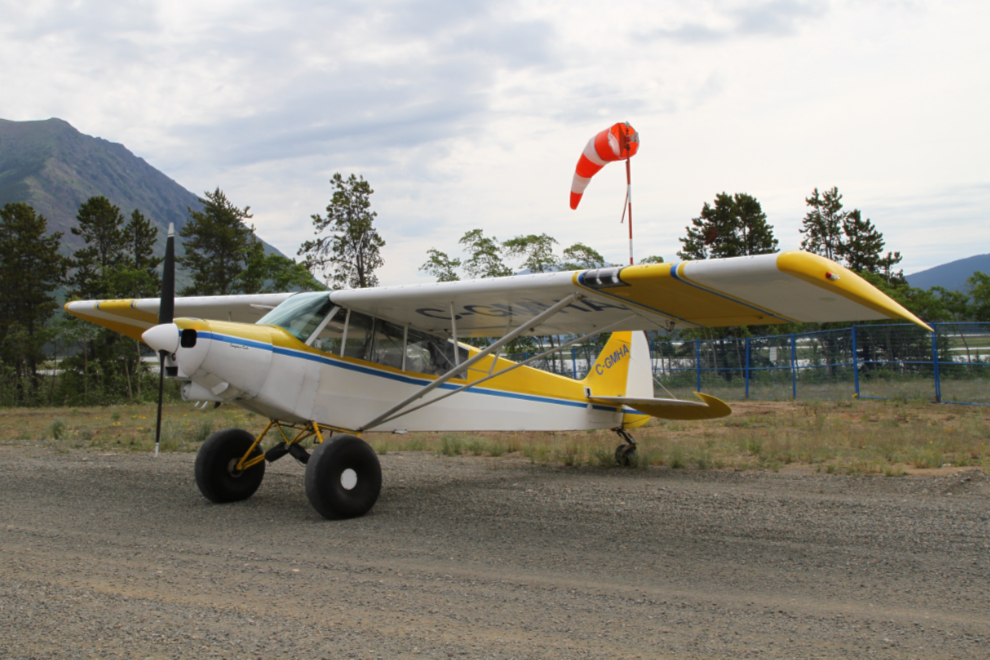
1968 Cessna 172I, CF-XWE. Keeping aluminum polished like a mirror on a half-century-old aircraft is a labour of love. This model was the first of the 172s to be powered by the extremely dependable Lycoming engines that would make them one of the most successful planes ever built (over 44,000 were built).
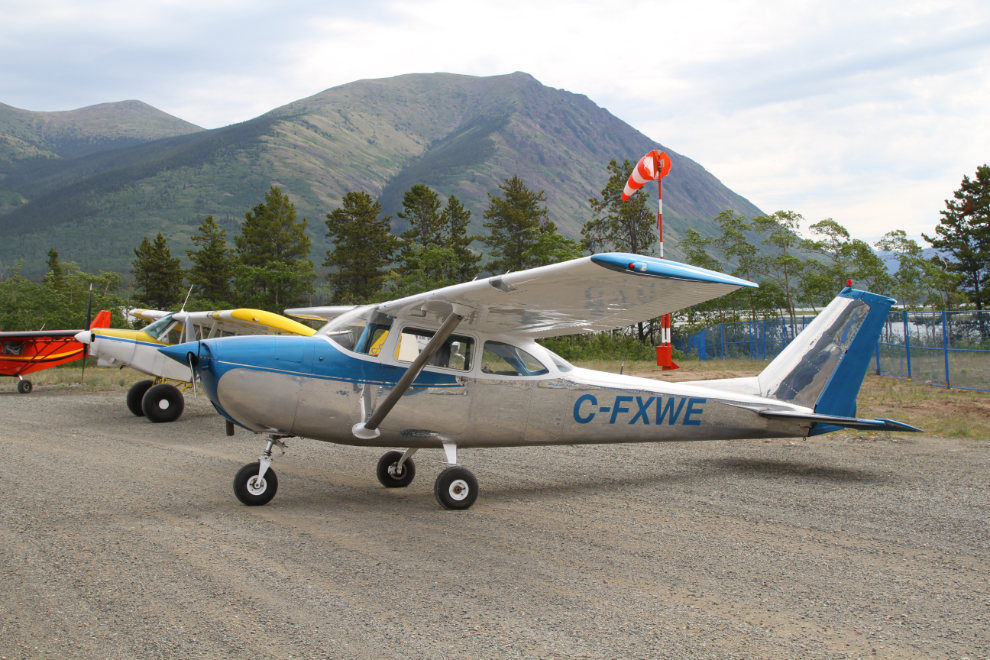
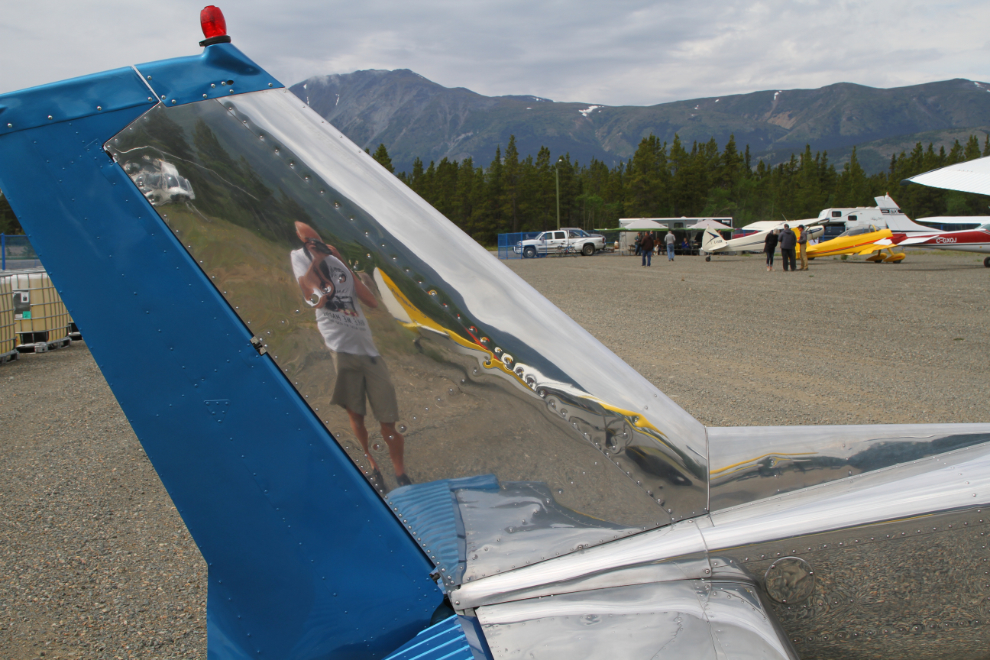
I think most airplane fans would agree that the Staggerwing Beech is one of the most beautiful aircraft ever built. It first flew in 1932, and by the time this one was built in 1943, it was often used as an executive aircraft. With a Pratt & Whitney R-985-AN-1 “Wasp Junior” radial engine producing a top speed of 212 mph (184 knots, 341 km/h), it was often seen in air races.
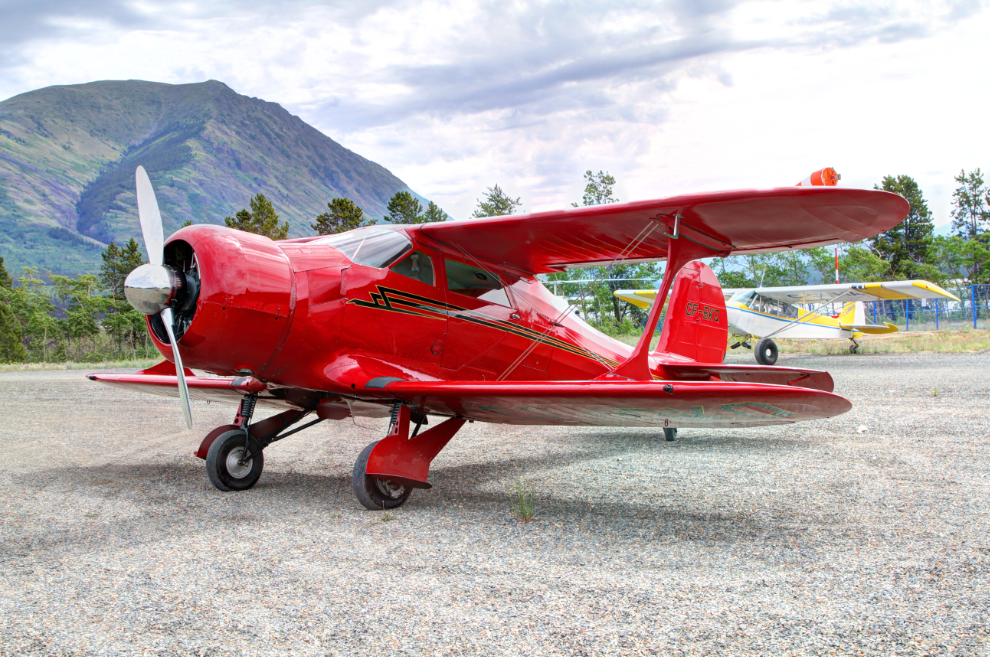
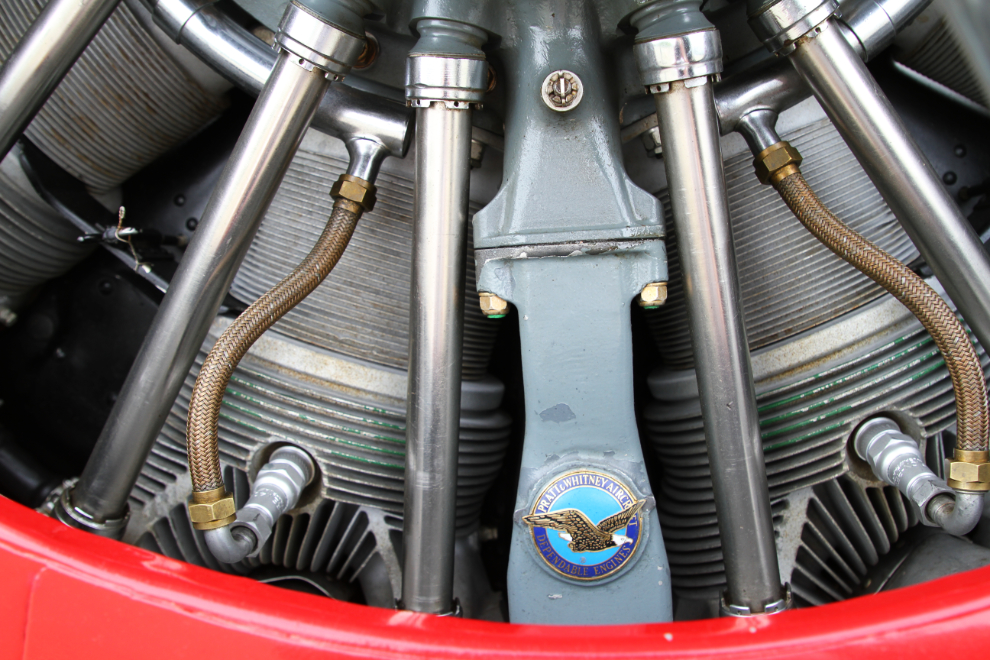
Next is a 1950 Piper PA-18 Super Cub, C-FJCM, also set up well for off-runway use.
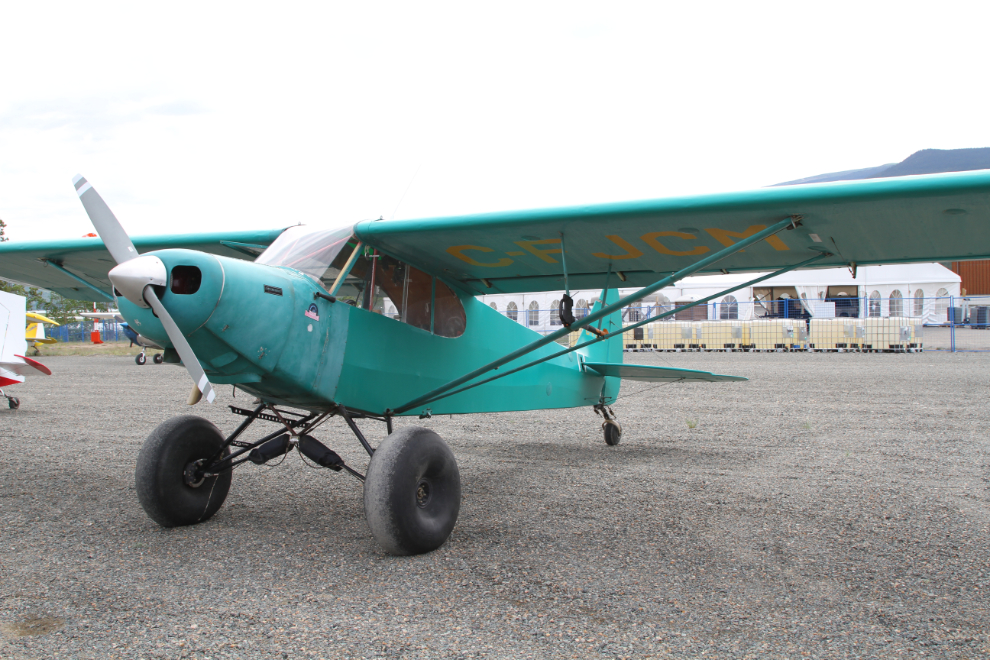
No fancy electronic panel here – this is the way I learned to fly, with just the instruments you need in the back country.
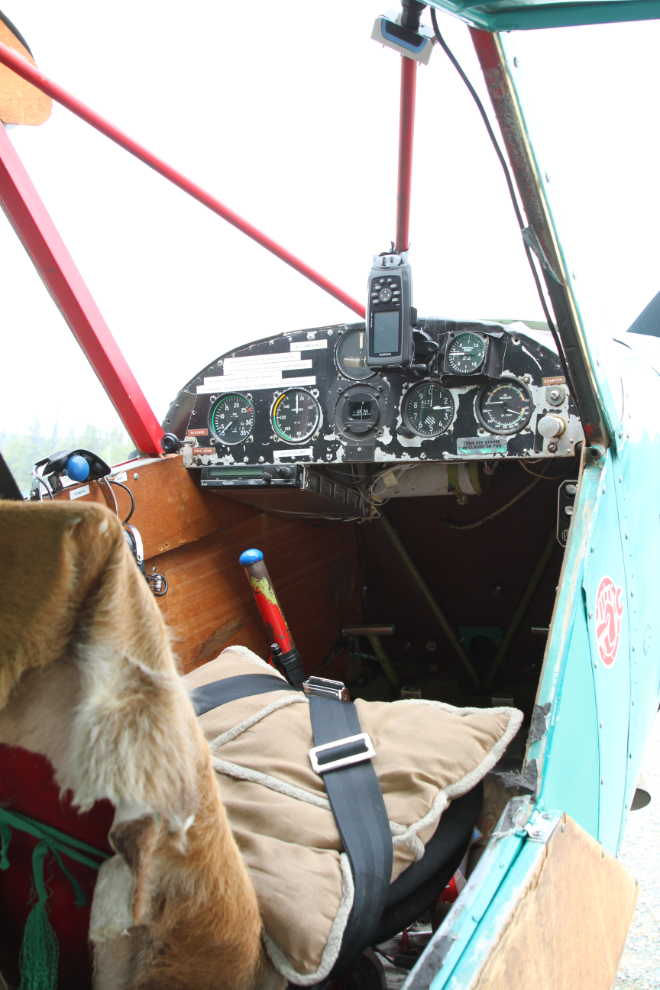
Next we have a Van’s RV-8 – C-GRVO was built in the Yukon in 2005.
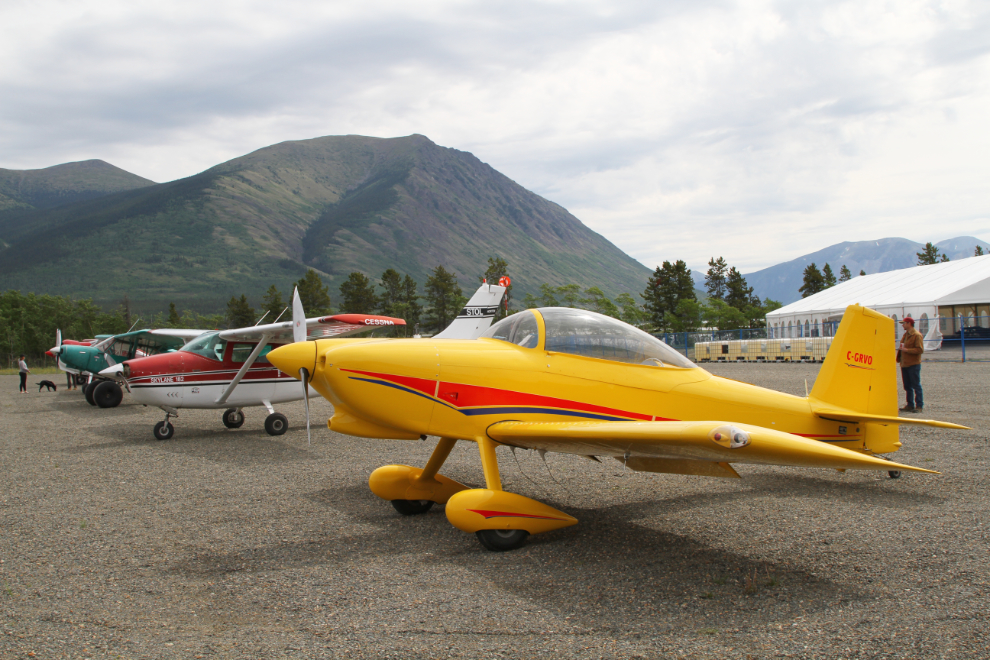
Another Piper Super Cub, C-FLRK is a 1956 PA-18-150 model. I love the “Fat Tire Cowboys” decal on this bush-equipped plane.
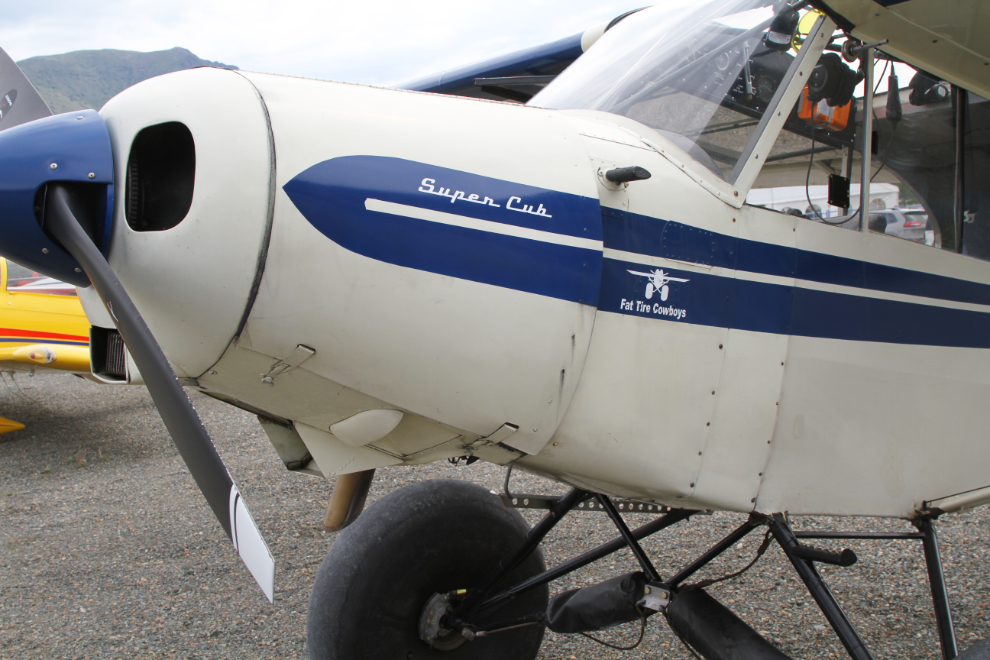
This beautiful bird is a Glasair GS-2 Sportsman 2+2, N357JH, built in 2006. With amphibious floats able to land on water or a runway, it carries 2 passengers and 1 large dog in the back 🙂
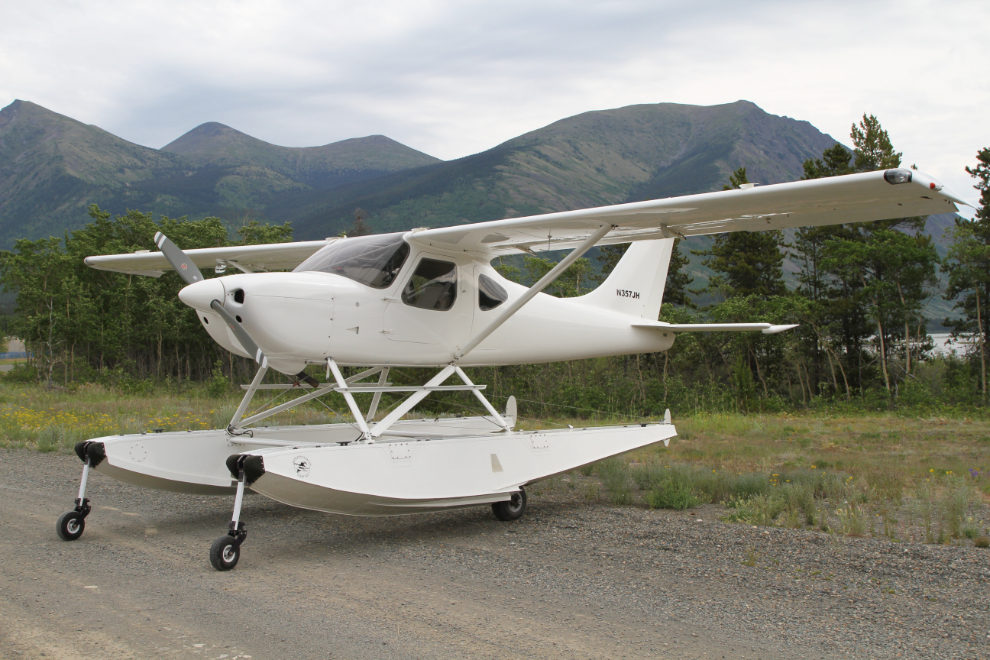
As I was leaving, the Staggerwing did too, so I stayed to watch and listen that – OMG I love the sound of big round engines!
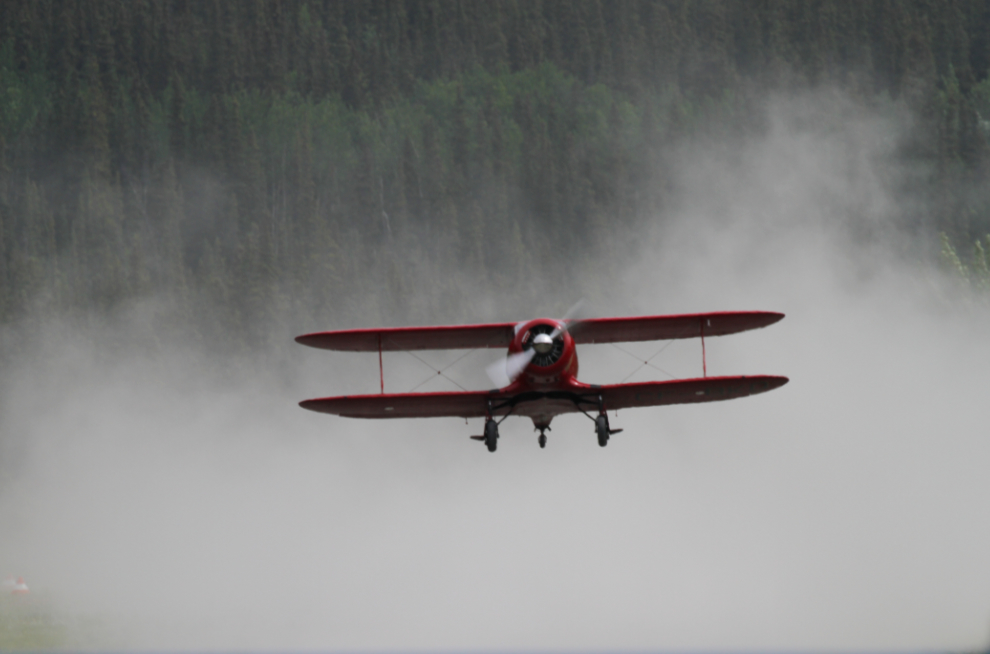
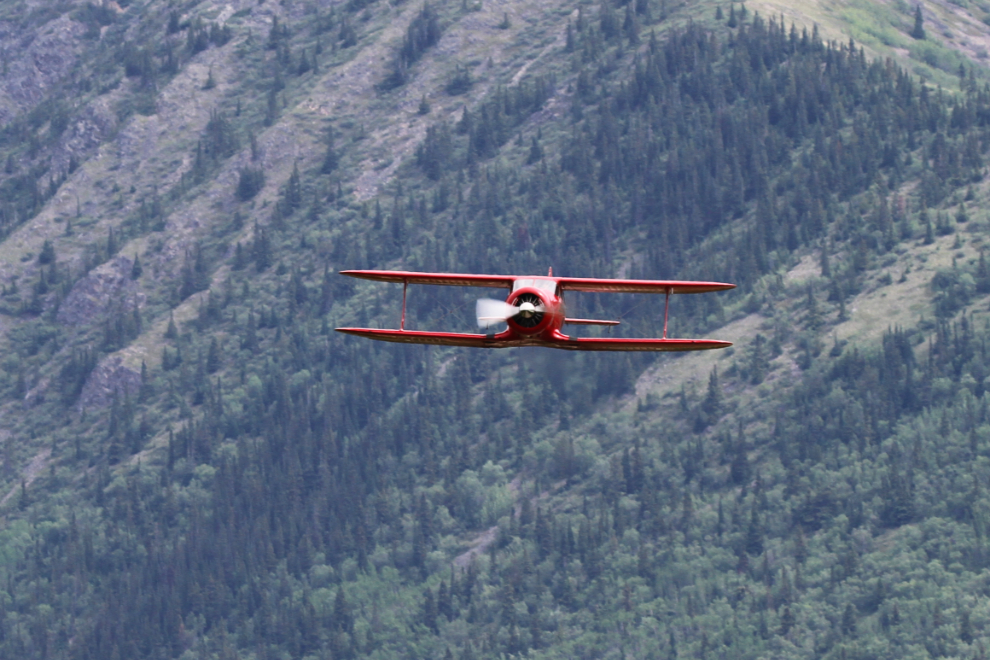
And then I left, with an awful itch to get out flying. When I got home I spent some time looking at airplanes for sale, and I’ve now chartered the helicopter you saw above for a glacier trip on Saturday.
On the way home, I stopped at the Robinson Roadhouse to have a look at the stabilization work being done. Not a restoration by a long shot, but the important thing to me is that this should keep it standing for a good number of years yet.
